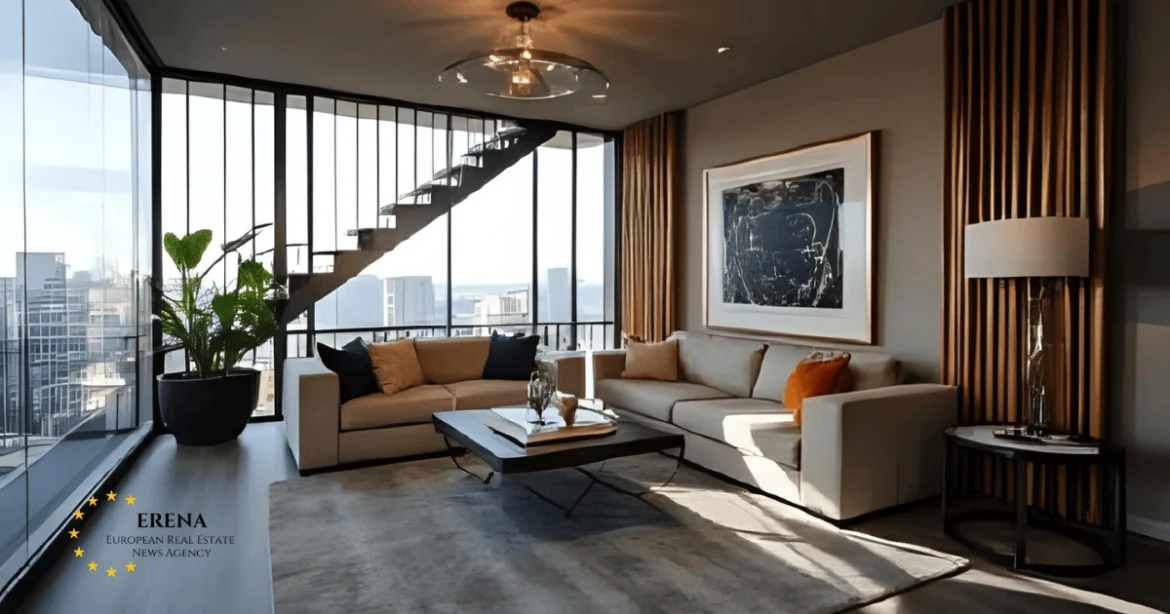In 2025, European homebuyers are rethinking what “ideal living space” really means. The open-plan concept that once dominated residential architecture is no longer the universal favorite. Buyers still want light-filled, social interiors, but they now place equal value on privacy — whether for remote work, studying, or unwinding in peace. With purchase prices rising and apartments getting smaller, every square meter must work harder. The era of vast, undivided spaces is giving way to smart, flexible design.
Rising Prices Are Reshaping How People Live
Affordability pressures are transforming expectations across Europe. In Amsterdam, the cost of an average 70 m² new apartment equals about fifteen years of gross household income, and in Prague it is among the toughest in Europe as well. In major markets, the entry ticket remains steep: Berlin averages around €5,300–5,500 per square meter, Paris hovers near and often above €10,000 per square meter depending on segment, while Prague sits roughly at €5,500 per square meter for existing stock and nearer €6,500 for new projects. Against a continent-wide shortage approaching ten million homes, buyers are more strategic than ever — impressed less by size and more by how well a plan solves daily life.
From Open Spaces to Smart Divisions
Open-plan living is not disappearing — it is evolving. The kitchen-living area remains the social heart, yet households increasingly expect at least one fully closable room. Flexibility is now a core requirement. A single space may function as a home office by day, a guest room on weekends, and a quiet reading nook in the evening. Instead of one enormous room, homes rely on partitions, sliding doors, and modular furniture so spaces can transform without heavy construction.
Design language supports this shift. Natural materials — warm woods, stone, tactile textiles — lend intimacy and visual calm. Rich tones like forest green, burgundy, and terracotta replace stark minimalism, helping compact apartments feel enveloping rather than cramped. The signal is clear: emotional comfort and practical function now outrank showy expanses of empty floor.
Practicality Over Size
The new buyer mindset can be summed up simply: practicality beats pure square footage. Storage walls, adaptable layouts, and multipurpose rooms climb higher on wish lists than raw area. Researchers tracking new-home design note that shoppers are “thinking really practically,” prioritising storage and everyday usability; designers, in turn, work to “fit the same amount of function into a smaller footprint.” Developers are responding with tighter but smarter plans, while owners of existing homes reconfigure interiors to extract more utility from the space they already have.
The Cost of Adaptation
Because expanding floor area is often impossible or unaffordable, many households opt for targeted upgrades that reshape how a home works:
- Build a plasterboard partition to carve out a study or guest room: typical small-room jobs start around four figures and scale with acoustic spec and finishes
- Add a pocket (cassette) door to free up swing space and create privacy without blocking light
- Install French doors to separate a lounge from the kitchen or to open onto a balcony/patio
- Use glazed dividers to zone functions while keeping daylight continuous
Budgets vary by country and specification, but the common thread is impact per euro: one well-placed partition or glazed screen can transform daily life — giving a family quiet for calls, a student focus for exams, or simply a peaceful corner to recharge.
Essential Insights
The open-plan ideal that defined the 2010s is maturing into something more nuanced. European buyers still value connected, airy living areas — just not at the expense of privacy, flexibility, or function. In a market shaped by higher costs and limited supply, the homes that stand out deliver both: generous, light-filled social spaces that can also become secluded and focused when needed. The future belongs to adaptable plans — spaces that shift gracefully between social, professional, and personal modes. It is no longer a choice between open or closed; the real value lies in homes that can be both.

